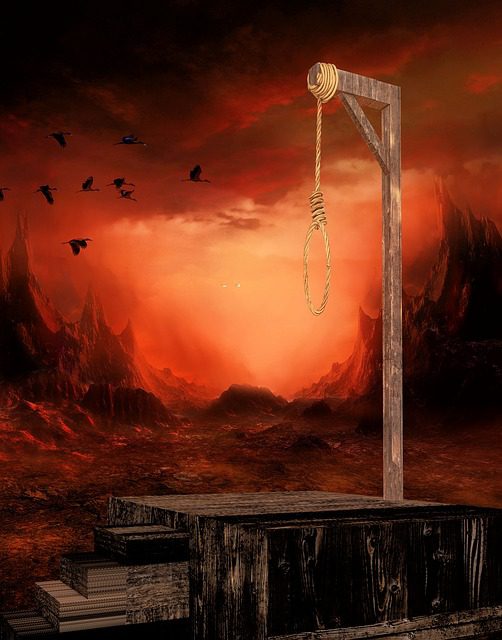
“Capital punishment is society’s final assertion that it will not forgive.” – Martin Luther King.
With the possible exception of abortion, there may not be a more controversial practice than the death penalty.
This work aims to provide an overview of the death penalty’s history, including the Biblical view of the practice. I will also review the evolution of Catholic teaching on the death penalty and conclude by suggesting that the Catholic Church’s contemporary teaching is at last consistent with its pro-life history.
History of the Death Penalty
The ancient Babylonian Code of King Hammurabi appears to have been the first legal system to codify the death penalty. This would have occurred around the Eighteenth Century B.C. The death penalty was also part of the Hittite Code and played a significant role in the justice systems of ancient Greece and Rome. The means by which the death penalty was carried out included crucifixion, drowning, beating to death, burning alive, and impalement.
About a thousand years after the death of Christ by crucifixion, hanging became the standard method. However, under the reign of Henry VIII, the means of execution became increasingly cruel. Methods such as boiling, burning at the stake, beheading, and drawing and quartering became common.
The death penalty in the United States was heavily influenced by its use in Great Britain. When European settlers came to the new world, they brought the practice of capital punishment. In 1612, Virginia Governor Sir Thomas Dale enacted the Divine, Moral and Martial Laws, which provided the death penalty for even minor offenses such as stealing grapes, killing chickens, and trading with Indians. (King, Laura Randa. Society’s Final Solution. University Press of America, 1997).
The Bible has quite a bit to say about putting people to death and, for the most part, suggests that the death penalty has a place in society. In Genesis 9:6, God commands that “Whoever sheds human blood, by humans shall their blood be shed.” Taken together with Romans 13:4, it seems that the Bible allows a government the authority to utilize the death penalty.
Yet, one can also find Biblical evidence to the contrary. The Fifth Commandment commands that “You shall not kill.” Yet, this commandment has often been translated as “You shall not murder.” The distinction is that murder is an unlawful killing. Using this interpretation, killing is licit if it is done under the color of the law.
Today, about a quarter of the world’s nations utilize the death penalty. According to a study conducted by Amnesty International, of the one hundred and ninety-five nations, some fifty-five countries retain the death penalty as part of their legal system.
Catholic Teaching on Capital Punishment
Before reviewing how Catholicism addresses the issue, it is prudent to ask whether capital punishment is even within the purview of religion. At least in the West, the basis for such an objection lies in the separation of Church and state. Since the state conducts capital punishment without the input of any religion, let alone Catholicism, it can be argued that the question of capital punishment is strictly a legal and political one.
However, if there is such a thing as objective human rights, then they must be derived from God and not the government. And since taking a life is the ultimate impingement on human rights, the question of whether the government should be carrying out the death penalty is indeed a religious one.
The Catholic Church’s view of the death penalty is a history of change. The belief that capital punishment is a power granted to the state by God was given voice by Pope Innocent I, “It must be remembered that power was granted by God, and to avenge crime the sword was permitted; he who carries out this vengeance is God’s minister (Romans 13:1–4). What motive have we for condemning a practice that all hold to be permitted by God? We uphold, therefore, what has been observed until now, in order not to alter the discipline and so that we may not appear to act contrary to God’s authority.” (See Migne, Jacques-Paul. Patrologiae Cursus Completus: Series Latina. 1845).
No lesser authorities than Saint Augustine and Thomas Aquinas also thought that natural law – as the manifestation of the mind of God – permitted the death penalty to be used by the proper authorities. (See Saint Augustine. The City of God. Xist Publishing, 2016, and Aquinas, Thomas. Summa Contra Gentiles. University of Notre Dame Press, 1975).
The Church’s teaching that the death penalty was an acceptable form of punishment remained virtually unchanged and unopposed until recently.
Using the Second Vatican Council’s stress on the dignity and value of all human life as an impetus, Pope Paul VI removed capital punishment from the Vatican’s code of laws. In addition, the Church began to speak out against the death penalty.
In 1992, the Catechism of the Catholic Church was revised to state that “If bloodless means are sufficient to defend human lives against an aggressor and to protect public order and the safety of persons, public authority should limit itself to such means, because they better correspond to the concrete conditions of the common good and are more in conformity to the dignity of the human person.”
In his 1995 encyclical, Evangelium Gaudium (The Gospel of Life), Pope John Paul II argued that the modern state has sufficient means to protect its citizens without resorting to capital punishment. In 2020, Pope Francis issued his encyclical Fratelli Tutti (On Fraternity and Social Friendship). In it, the Pope stated that “the church is firmly committed to calling for its [the death penalty] abolition worldwide.”
Despite some objections, today, the Catholic Church views the death penalty as an anachronism. The contention is that the dignity of human life is so great, and the modern nation’s capacity to protect itself sufficiently strong, that there is no longer a need for putting people to death.
Conclusion
In the preceding work, I have endeavored to provide an understanding of one of the most controversial topics in modern society. I have delineated the death penalty’s history and the Catholic Church’s stances on capital punishment.
Driven by the understanding that all life is precious, the Catholic Church’s current teaching on the subject is now consistent with its pro-life stance on topics such as abortion.












